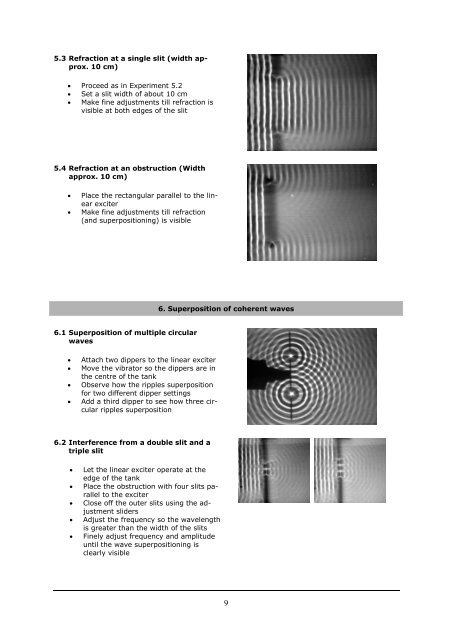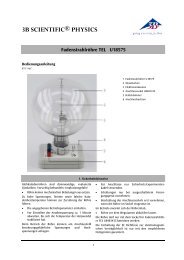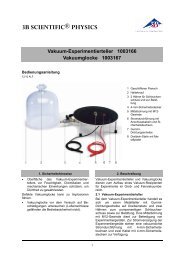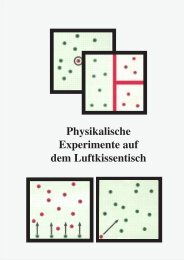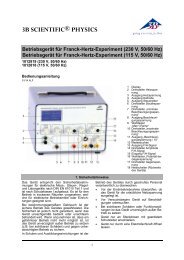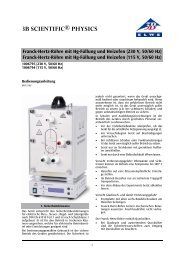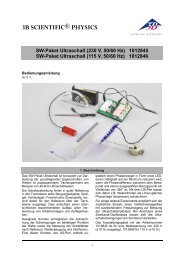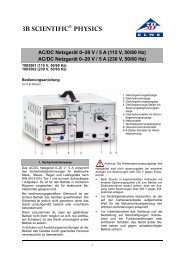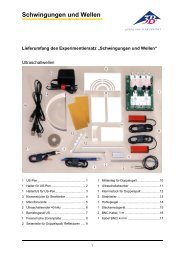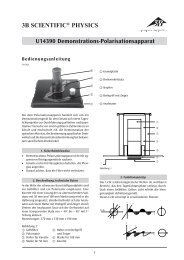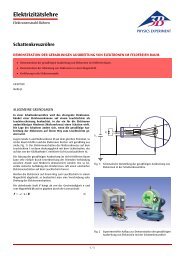3B SCIENTIFIC® PHYSICS Wellenwanne U21910
3B SCIENTIFIC® PHYSICS Wellenwanne U21910
3B SCIENTIFIC® PHYSICS Wellenwanne U21910
You also want an ePaper? Increase the reach of your titles
YUMPU automatically turns print PDFs into web optimized ePapers that Google loves.
5.3 Refraction at a single slit (width approx.<br />
10 cm)<br />
• Proceed as in Experiment 5.2<br />
• Set a slit width of about 10 cm<br />
• Make fine adjustments till refraction is<br />
visible at both edges of the slit<br />
5.4 Refraction at an obstruction (Width<br />
approx. 10 cm)<br />
• Place the rectangular parallel to the linear<br />
exciter<br />
• Make fine adjustments till refraction<br />
(and superpositioning) is visible<br />
6. Superposition of coherent waves<br />
6.1 Superposition of multiple circular<br />
waves<br />
• Attach two dippers to the linear exciter<br />
• Move the vibrator so the dippers are in<br />
the centre of the tank<br />
• Observe how the ripples superposition<br />
for two different dipper settings<br />
• Add a third dipper to see how three circular<br />
ripples superposition<br />
6.2 Interference from a double slit and a<br />
triple slit<br />
• Let the linear exciter operate at the<br />
edge of the tank<br />
• Place the obstruction with four slits parallel<br />
to the exciter<br />
• Close off the outer slits using the adjustment<br />
sliders<br />
• Adjust the frequency so the wavelength<br />
is greater than the width of the slits<br />
• Finely adjust frequency and amplitude<br />
until the wave superpositioning is<br />
clearly visible<br />
9


